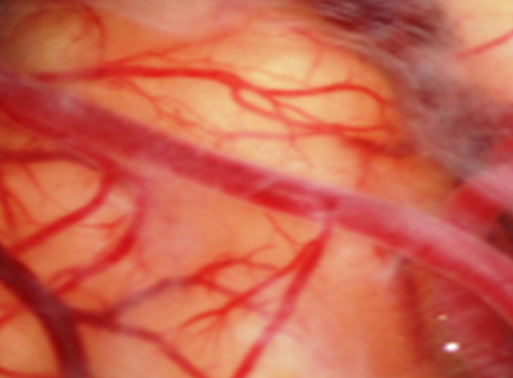Epilepsy pathogenesis
The brain, an enigmatic masterpiece of nature, continues to shroud itself in mystery. Esteemed neuroscientists around the globe tread cautiously around these mysteries, acknowledging the profound intricacies that still elude our understanding. In our pursuit, we endeavor to unravel these enigmas.
Before delving into the hypothesis, let us contemplate the conventional perception of the brain’s functionality, both from our standpoint and that of others. Regarded as an organ operating on electricity, the brain relies on the conduction of electric currents by neurons. Intriguingly, the brain does not generate electricity autonomously; rather, it draws upon the electricity potentially produced within the skeletal muscles. During the restorative embrace of sleep, this electricity traverses from muscles to the brain, finding its reservoir in the reticular nucleus. In essence, the reticular nucleus acts as a biological battery, storing electrical energy during slumber, later utilized by neurons upon awakening.
Our exploration into intracranial pressure dynamics, facilitated by video monitoring and eye bottom observations, has illuminated variations between the right and left hemispheres in afflicted individuals. The irregularities in intracranial pressure, stemming from the intricate multistage cavity within the skull, may induce deformation in the soft, pliable substance of the brain, particularly in the interhemispheric and reticular nucleus regions.
Enter the realm of inhibitory neurons, overfilled with electricity, or hyperpolarized neurons. Activation, in the form of depolarization, triggers their functional state. Subsequently, discharged neurons must undergo inhibition once more, transitioning back to an activated state through repolarization, a process fueled by the energy of reticular cells.
The hypothesis on the pathogenesis of epileptic seizures, colloquially referred to as ‘the hypothesis of a short circuit in the subcortical batteries of electricity,’ posits that asymmetric increases in intracranial pressure deform and potentially damage axons of certain reticular neuron batteries, particularly near synapses. This deformation culminates in the rupture of one of their isolated layers, unleashing a torrent of electrical energy into the extracellular space—a short circuit. The cortex, stripped of its electrical equilibrium, witnesses the discharge of Betz cells, culminating in their depolarization or activation, signifying tonic seizures. The released electricity permeates the intercellular space, influencing the depolarized Betz cells, resulting in their periodic polarization—clonic seizures.
Post-seizure, the depleted brain yearns for rejuvenation, compelling the patient to succumb to the embrace of sleep, initiating the vital process of recharging.
Surgery of Epilepsy
Pathogenesis of epileptic seizure, The new ways of surgery.
K.V. Khachatryan, A.M.Aydinyan, T.K.Khachatryan
Rationale
Epilepsy remains unsolved problem of modern neurology. This fact has his explanation. The reason is some mistakes in neuroscience. Till now the reticular formation of the brain considered as non specific, activating system and regulator of asleep and awake conditions. It means to say nothing about reticular system. We share the opinion of authors, who think that reticular nuclei are biological accumulators of electricity. This idea was first expressed by Pavlov in 1931. The vision from such imagination can explain many non understandable processes of neuroscience e.g. why we sleep, how brain control different functions, patհogenesis of epilepsy, neurosis etc.
As an biological structure the reticular system also can be subject of damage. We don’t know the nosology due to reticular pathology. For example, what will happen if into accumulators take place “short circuit”? The cortex neurons will depolarize. The depolarization of motor cortex will be expressed as muscle shakes, which clinically appears as tonic seizures. Repolarization of motor cortex can correspond as clonic seizures. Based on this thoughts we proposed the hypothesis of “short circuit” of pathogenesis of epileptic seizures. According to it during an epileptic seizure an outflow of electricity into intercellular space occurs in one of reticular nuclei. The reason of “short circuit” can be damage of myelin layer of reticular cells. Our long term clinical observation led to the idea that myelin layer can be damaged by deformation of brain tissue due to different intracranial pressure into right and left hemispheres of brain. ICP plays an dramatically role of brain functions.
Methods
Our grope have agreement with administration of Institute to organize experiments on dogs. The temporary problems with lowers und ethic comity unsolved yet. The alleged experiment is as follows: To the dog we insert subdural liquid balloon with two external drainage. One of them for checking ICP, second for injection or rejection colored liquor. Enabled EEG monitoring. We increase pressure into balloon and register level of ICP when in EEG appears epileptic waves and level when we observe epileptic seizure. Then we made falxotomy. We repeat experiment. Compare results.
Results
Negative result also result. We hope during annual meeting we will prepare analysis more than ten experiments.
Conclusions
N/A Will be after series of experiments. In case of failure of experiments the idea of new theoretical vision of Epilepsy will be present.
Funding: Please list any funding that was received in support of this abstract.
Will be submit during presentation.

